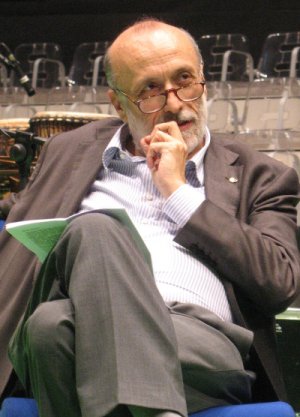 Mundus maris is participating in the Terra Madre networking event in Turin, Italy, 21 to 25 October 2010. Terra Madre is organised by the Slow Food Movement that was started in Italy in 1989 upon the initiative of Carlo Petrini. Delegates from 15 countries signed the founding manifesto.
Mundus maris is participating in the Terra Madre networking event in Turin, Italy, 21 to 25 October 2010. Terra Madre is organised by the Slow Food Movement that was started in Italy in 1989 upon the initiative of Carlo Petrini. Delegates from 15 countries signed the founding manifesto.
Slow Food is a non-profit, eco-gastronomic member-supported organization that was founded in 1989 to counteract fast food and fast life, the disappearance of local food traditions and people’s dwindling interest in the food they eat, where it comes from, how it tastes and how our food choices affect the rest of the world. To do that, Slow Food brings together pleasure and responsibility, and makes them inseparable. Slow Food has currently over 100,000 members in 132 countries.
Fish and seafood is part of the diet of people around the globe. The Food and Agriculture Organization of the United Nations (FAO) estimates that humans consumed on average 16.7 kg of fish and fisheries products in 2006. 47% of this was believed to be due to aquaculture.
18.5% of total animal protein intake in low-income food deficit countries (LIFDCs) is ensured by fish and fisheries products – probably an under-estimation because artisanal and subsistence fisheries are very poorly covered in national statistical systems and thus also by FAO.
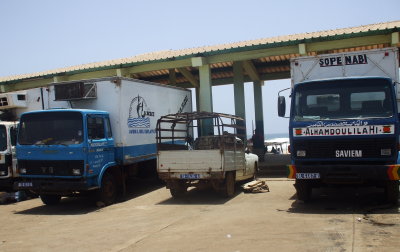 Production of fish and seafood is one of the most globalised food sectors in the world. FAO estimates that close to 40% of global production enters international trade. Even many small-scale fisheries are fully integrated into this global market, though their contribution is chronically underestimated. Europe is the biggest importer of fisheries products in the world, before the other two major import markets: North America and Japan. China is reported to be the biggest producer in the world, but has also a huge domestic demand because fish has been a standard part of Chinese cuisine for millennia.
Production of fish and seafood is one of the most globalised food sectors in the world. FAO estimates that close to 40% of global production enters international trade. Even many small-scale fisheries are fully integrated into this global market, though their contribution is chronically underestimated. Europe is the biggest importer of fisheries products in the world, before the other two major import markets: North America and Japan. China is reported to be the biggest producer in the world, but has also a huge domestic demand because fish has been a standard part of Chinese cuisine for millennia.
Other populous Asian countries are also big players in the global market of fishery products. At the same time, poor segments of the population, particularly in developing countries are the first to be vulnerable to scarcity and higher prices engendered by a mix of overfishing, environmental degradation, lack of purchasing power and other factors.
Promoting and eating sustainably produced fish and seafood, preferably from local or nearby sources rather than products that have travelled half-way around the world is a concern Mundus maris shares with the Slow Food movement. That can have many positive side effects in addition. Avoiding to eat baby-fish is one concrete way. Promoting fish for human consumption instead of reduction to fishmeal and oil, such as historically happened to the famous Peruvian anchoveta, is another.
The good example is cod. For a long time, it was mostly reduced into fish sticks. In the past, the fishermen pulled up specimens from the North Sea and the Baltic weighing in at an impressive 100 kg. Today, the animals are much smaller. They end up in refrigerated shelves before they even had the chance to reproduce. The young generation is not coming through. 150,000 tons of adult cod would need to be swimming in the North Sea to maintain the stock. Currently, there are less than 70,000 tonnes. The cod eats sprat, herring and crabs. Once they are gone that tilts the ecosystem. Jellyfish are multiplying, even bacteria. Life in the oceans is changing - and the fishermen expand their radius of action into distant fishing grounds.
 Large fishing fleets from the EU and other countries going after the resources outcompete the West African fishermen. In Senegal, the Thiof - Epinephelus aenaeus, the White grouper – used to be a national dish. It has now largely disappeared from the diet, as well as some other valuable bottom fish. Even the octopuses that had benefited from the thinning – they are eaten by the fish - are becoming rare. The trawlers are insatiable.
Large fishing fleets from the EU and other countries going after the resources outcompete the West African fishermen. In Senegal, the Thiof - Epinephelus aenaeus, the White grouper – used to be a national dish. It has now largely disappeared from the diet, as well as some other valuable bottom fish. Even the octopuses that had benefited from the thinning – they are eaten by the fish - are becoming rare. The trawlers are insatiable.
In the North Sea, they pull up flatfish from the water, of which more than 90% are smaller than the minimum size required by the EU. They are caught too young – accounting for up to 80 percent of all fish that ends up in German shops. Worldwide, up to 70 percent of all exploited fish species are threatened.
The Pacific coast of South America, the cold Humboldt Current – once it was especially rich in fish: groupers and horse mackerel, hake and bonito were swimming about in great abundance. Guano birds multiplied accordingly and allowed a lucrative saltpeter - fertilizer industry. All thanks to the rich schools of anchoveta. Today it is different. The sea is, however, not yet empty. Anchovies, or anchoveta as they are known locally, are still about, though now in smaller shoals. But: As long as there was hake in abundance, why eat the anchovies. In the interior of Peru, they were similarly unpopular as jellyfish in Germany, for example. They did not have their place on the menu, at least not in recent decades. Yet, they were heavily fished - for the anchoveta to be processed into fishmeal. And nowhere else in the world as much of this protein product gets manufactured as in Peru.
Business is still good. Salmon and other predatory fish are thus fed in the global aquafarms. The rule of thumb is: it takes up to 5 kilos of feed fish for one kilogram of farmed fish. This way, aquafarms of organism requiring animal protein paradoxically aggravate the problem of overfishing. And politics imposes few or no boundaries on the hyper-modern fishers.
 Those who would like to continue enjoying fish on their plates need to protect the sea creatures themselves, for example at the fish counter. If the North Sea cod is smaller than 68 centimeters, choose a different fish. This is more common than we suspect: In a test, three quarters of the fish, the Hamburg consumer protection agency bought in delicatessen shops, department stores and supermarkets, were too small.
Those who would like to continue enjoying fish on their plates need to protect the sea creatures themselves, for example at the fish counter. If the North Sea cod is smaller than 68 centimeters, choose a different fish. This is more common than we suspect: In a test, three quarters of the fish, the Hamburg consumer protection agency bought in delicatessen shops, department stores and supermarkets, were too small.
Together with fisheries biologists the agency developed a Shopping Guide - the Fisch-O-Meter, a washable special ruler for each shopping bag. Indicated thereon are: The minimum size for cod, but also for plaice or sprat. With an Internet-enabled mobile phone or an I-phone you can access the information anywhere - www.Fischimhandy.de or the I-Phone. Those who want to create their own fish ruler can do so on the website of INCOFISH Project. The research examined how - often conflicting - demands on coastal resources can be reconciled. The ruler helps, the idea is already exported.
Pacific coast, the small fishermen in Peru are annoyed. So far, they have had to put up with the occasional El Niño (the Christ child). El Niño - the name comes from the Peruvian fishermen - occurs as a natural phenomenon, often around Christmas time. Because it weakens the Humboldt Current, nearly all fish stay away. But now, there is also the overfishing. The Peruvian fisheries experts are not pleased either.
So they have, in cooperation with scientists from Europe also developed a fish ruler – Chikipez - "the little fish," adapted to the specific conditions in different regions of Peru. It is e.g. about the Pejerrey (a type of smelt), the Lisa (Mullet), the Cabrilla (the Peruvian sea bass) or bonito (a small species of tuna).
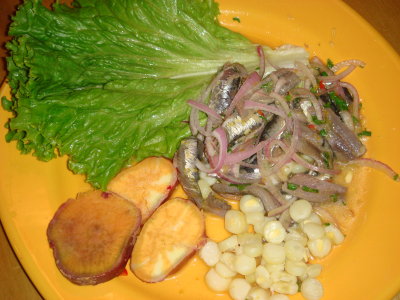 The power of the consumers is actually limited. And for the Peruvians fish supply is particularly important as it covers a significant part of their animal protein needs (21.4 kg / year per capita). The government has been trying for some time to promote the consumption of the Anchoveta. Several newspapers have launched a campaign. Prominent Peruvian chefs have developed 60 Anchoveta recipes, the energy company Edelnor has supported them. With success.
The power of the consumers is actually limited. And for the Peruvians fish supply is particularly important as it covers a significant part of their animal protein needs (21.4 kg / year per capita). The government has been trying for some time to promote the consumption of the Anchoveta. Several newspapers have launched a campaign. Prominent Peruvian chefs have developed 60 Anchoveta recipes, the energy company Edelnor has supported them. With success.
In 2000, just 30,000 cases with 20 Anchoveta-cans each have been sold, in 2008 it were already 1.6 million cases. Now Peruvians eat Anchoveta raw - as ceviche. For ceviche, raw fish is cured with lime juice. It is then served with onions, chili, sweet potatoes and other side dishes.
For the first time since the pre-Columbian high cultures, the anchoveta has re-entered and enriched Peruvian menus. Peruvians eat Anchoveta also as a kind of pickled herring. The imagination knows no boundaries.
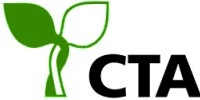 Three Mundus maris partners from Africa will participate in the Madre Terra event in Turin. Their participation has been kindly sponsored by CTA - the Technical Centre for Agricultural and Rural Cooperation ACP-EU. Read on to make their acquaintance and read their story.
Three Mundus maris partners from Africa will participate in the Madre Terra event in Turin. Their participation has been kindly sponsored by CTA - the Technical Centre for Agricultural and Rural Cooperation ACP-EU. Read on to make their acquaintance and read their story.
Adaba T. Ibim, a voice from the Niger Delta in Nigeria
Dr. Mrs. ADABA TONYE IBIM is a qualified and seasoned Aquaculture / Fisheries professional. She is a lecturer with the Fisheries Unit of the Faculty of Agriculture in the University of Port Harcourt, Rivers State, Nigeria, and also the Executive Director of the Non-Governmental Organisation, Agriculture Support Foundation (ASF).
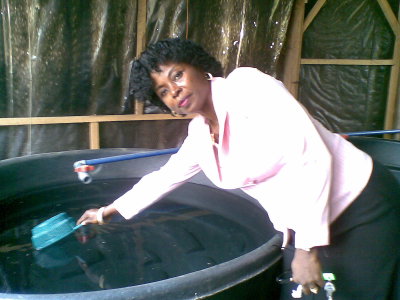 She has worked for 25 years, with 20 years in the agriculture sector especially in the fisheries and aquaculture sector. She specializes in aquaculture technology development, capture fisheries development, postharvest technology, human resources capacity building and technology transfer to rural fishers with special attention to participatory fisheries governance. She has a great practical experience in sustainable livelihood development and has been involved in participatory / interdisciplinary research, ICT in agriculture, development of women in agriculture, as well as rural and urban agricultural development/community agriculture development strategies with other Non-Governmental Organisations (NGOs).
She has worked for 25 years, with 20 years in the agriculture sector especially in the fisheries and aquaculture sector. She specializes in aquaculture technology development, capture fisheries development, postharvest technology, human resources capacity building and technology transfer to rural fishers with special attention to participatory fisheries governance. She has a great practical experience in sustainable livelihood development and has been involved in participatory / interdisciplinary research, ICT in agriculture, development of women in agriculture, as well as rural and urban agricultural development/community agriculture development strategies with other Non-Governmental Organisations (NGOs).
Dr A. T. Ibim has also assisted in the establishment of fish farms for several groups and individuals, and facilitated public lectures, awareness campaigns, seminars and workshops geared towards improving communities, individuals, schools and cooperatives in agriculture and environment, under the auspices of the Agricultural Support Foundation, African Women Leaders in Agriculture and Environment (AWLAE, set up by Winrock International).
Adaba is a member of several professional and learned societies, such as the Fisheries Society of Nigeria (FISON), the Catfish Farmers Association (CAFAN), All Farmers APEX Association (AFAN), the National Association of Women in Academics (NAWACS), the International Society of Environmental Geotechnology (ISEG) and the Society for Occupational Safety and Environmental Health (SOSEH).
She is also engaged in community service, such as training and mentoring youths in her communities, individually and in collaboration with NGOs; mentoring young women scientists to advance their careers and achievements; youth capacity building session and training of local fishers in fish farming techniques.
Among the scholarships awarded are WINROCK/FORD/AWLAE (2006/2007), CTA – Technical Centre for Agricultural and Rural Cooperation (2008) and Netherlands Fellowship Programme (NFP/NUFFIC, 2009).
Read Adaba's short characterisation of the Niger Delta, where she was born, has grown up and keeps working for sustainable living conditions, coastal environments and food.
The Niger Delta area, Nigeria
 The Niger Delta area is a wetland area occupying the southern tip of Nigeria, and encompassing seven states of the country, namely Rivers, Delta, Abia, Cross river, Akwa Ibom, Ondo, and Edo states. It is made up of a network of rivers. These rivers are known to be high in floral and faunal diversity. The soils are rich in minerals, including CRUDE OIL and Natural GAS, on which the country's economy thrives.
The Niger Delta area is a wetland area occupying the southern tip of Nigeria, and encompassing seven states of the country, namely Rivers, Delta, Abia, Cross river, Akwa Ibom, Ondo, and Edo states. It is made up of a network of rivers. These rivers are known to be high in floral and faunal diversity. The soils are rich in minerals, including CRUDE OIL and Natural GAS, on which the country's economy thrives.
The Niger Delta area is dotted allover by numerous small fishing communities along the banks of its network of tributaries. The people of the Niger delta area depend mainly on the Rivers/seas for their sustenance. Thus, their main occupation is fishing and trading in fishery products.
The peoples of the Niger delta are from diverse ethnic tribes. They are the Ijaw, Efik, Yoruba, Ibo and Beni speaking tribes.
They are a friendly, hospitable, industrious and enterprising people. They were amongst the first blacks who traded with the whites, especially the Portuguese. This is still evident in the names they bear as a result of such interactions, such as BOB MANUEL, PEDRO, BLACK DUKE, to mention a few.
 My village, Abonnema, is one of the communities in the Niger delta area. Abonnema is found in Rivers State (in the Niger Delta area) of Nigeria.
My village, Abonnema, is one of the communities in the Niger delta area. Abonnema is found in Rivers State (in the Niger Delta area) of Nigeria.
Abonnema, like other fishing towns in the Niger Delta area, is located on the bank of the tributaries in the deltaic network. Abonnema lies at the bank of the Sombriero River. We are the Kalabari ethnic group, within the Niger Delta Ijaw tribe.
The “average” Abonnema person you meet is cheerful and interested in keeping people around him/her happy.
This good-natured behaviour has attracted many other people in the Rivers State. This has earned Abonnema the name NEW YORK CITY in Rivers State.
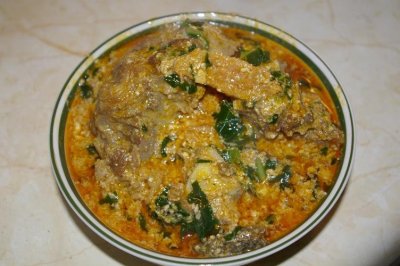 The food types and recipes are all associated with fishes. Our main foods are meals made of fish, especially seafoods. Many delicious recipes are made out of fish and seafoods. The fish could be eaten smoked, cooked, baked or fried. Meat is not a commonly consumed here.
The food types and recipes are all associated with fishes. Our main foods are meals made of fish, especially seafoods. Many delicious recipes are made out of fish and seafoods. The fish could be eaten smoked, cooked, baked or fried. Meat is not a commonly consumed here.
Native sauces made of seafoods include the popular “Rivers native soup”, shrimp in tomato sauce, Prawn kebab, cooked Crab and yam, among many others. Our dishes are cherished by all who come to the Niger Delta as they are quite tasty and nutritious and appeal to the eye and senses.
Have a look at the blog with Nigerian fish recipes with lots of goodies from Nigeria. Another nicely illustrated website shows, among others, recipes of egusisoup with stockfish, smoked dried fish and ground crayfish and many more ingredients.
Communal life in the Niger Delta area is cherished so much that wherever we are, we do not forget to go back, when possible. However, regular and unabated environmental pollution from oil wells and gas flaring have resulted in habitat destruction and degradation leading to fish kills, species exstirpation, and food poisoning. As a result of all these, eating of our cherished seafoods/fishes, has become a health risk. This has also affected many people's livelihood and destroyed the basis for many of the more traditional ways leading to poverty, youth restiveness, criminality and many other ripple effects, which make life unbearable for the community.

The Mundus maris Initiative is working on propagating the idea of sustainable seas by combining the sharing and use of scientific knowledge with artistic expressions to empower a larger number of people.
The idea is to promote respect for people and nature and solidarity in action. It is in collaboration with the Agriculture Support Foundation, both working towards better understanding of such environmental destruction and promoting non-violent and more sustainable alternatives, including environmental restoration as a source of livelihood, sustainable forms of agriculture and healthy food.
We are also teaching future generations of children and youths in universities in the Niger Delta area to be in the vanguard of those who will protect their environment in the future as they are exposed to these threats early in life.
Though the situation today is grim, we are hopeful that our activities will contribute to bringing us good fortune and improve the lives and livelihoods of the people of the Niger Delta area.
Adaba T. Ibim (PhD)
For more information on the environmental plight in the Niger Delta region and the social and human rights effects it engenders, click here. For yet more information, including more Nigerian recipes click here.
For more information on Mundus maris activities under development in the Niger Delta, click here.
Ibrahima Seck, gardening and fishing often go together in Senegal
 Ibrahima Seck was born in the fishing village of Hann, once outside the capital Dakar, but now almost totally enveloped by irresistible urban sprawl. Like many people in West Africa, Ibrahima speaks several languages, Serere, Wolof and French. In addition, he also speaks English.
Ibrahima Seck was born in the fishing village of Hann, once outside the capital Dakar, but now almost totally enveloped by irresistible urban sprawl. Like many people in West Africa, Ibrahima speaks several languages, Serere, Wolof and French. In addition, he also speaks English.
Ibrahima works in the Sociocultural Centre of Hann and is responsible for the section on training in information and communication technologies (ICT), much in demand particularly by young people.
He has also been involved in a micro-gardening project co-sponsored by the city of Milan, Italy, and implemented with a model garden in the Sociocultural Centre. Hundreds of women participated in that project, not the least because in many fishing villages in Senegal vegetable gardening and other agricultural activities were the other side of the coin. The combined sea-borne and land-based activities ensured both self-consumption and capacity to market surplus for income.
Ibrahima has been collaborating of late with Carla Zickfeld and Aliou Sall in the exploratory phase of the Mare Nostrum – A voice for West Africa project of Mundus maris. More on his involvement there can be seen on this website by clicking here.
Agriculture and food production around Dakar in Senegal
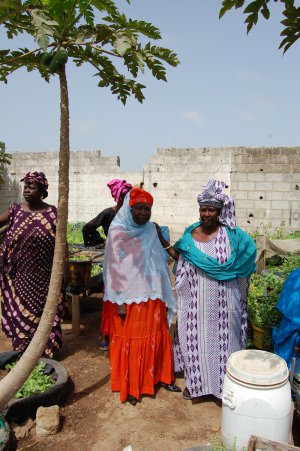 Agriculture in Senegal remains dominated by cereals for local food (millet, maize, sorghum and rice) and cash crops (groundnuts, cotton) in rural areas. In the Niayes zones, horticulture and gardening are practised due to favourable climatic conditions.
Agriculture in Senegal remains dominated by cereals for local food (millet, maize, sorghum and rice) and cash crops (groundnuts, cotton) in rural areas. In the Niayes zones, horticulture and gardening are practised due to favourable climatic conditions.
Even though production is stagnant or even regressing the authorities are working on strategies to reverse the trend and increase production again. It's also part of the fight against food insecurity. This translates into increasing the cultivated surfaces whenever possible and promoting transformation and other forms of value added garden products.
Since several years the urban gardening sector has witnessed a very rapid development in Dakar and surrounding, particularly with the advent of micro-gardening thanks to a project between Milan and Dakar. The objective of micro-gardens is to contribute to the improvement of food quality within the household and to develop activities advancing the fight against poverty and food insecurity.
In the municipality of the District of Hann Bel-Air, which benefitted from the project, the people have realised quite quickly the importance of this project and have participated actively. Based at the Sociocultural Centre of the municipality of Hann Bel-Air, the project Milan-Dakar has benefitted some 800 people, mostly women, through a training and demonstration centre (C.F.D).
These people regrouped in community production centres (C.P.C.) have benefitted in several areas. The exchanges about methods and consumption habits have contributed to the improvements of food in the families.
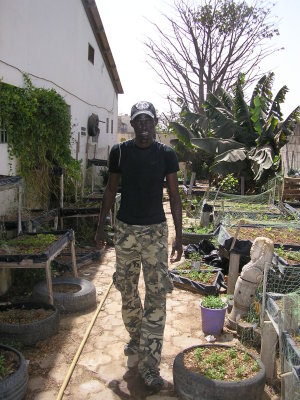 Even though the first phase was completed in 2008, the project participants continue working in their C.P.C. because they have experienced the advantage for themselves. As less and less space is available in the urban sprawl of Greater Dakar, roof-tops (see below) and other available surfaces are now being utilised for micro-gardening.
Even though the first phase was completed in 2008, the project participants continue working in their C.P.C. because they have experienced the advantage for themselves. As less and less space is available in the urban sprawl of Greater Dakar, roof-tops (see below) and other available surfaces are now being utilised for micro-gardening.
Moreover, they are accompanied by volunteers such as myself, who help keep up the level of activities in the expectation of a second phase of the project.
Last but not least the interaction with visitors or NGOs, such as Mundus maris, of which I am a member for the local coordination of the C.F.D. in Hann Bel-Air, helps to generate more results.
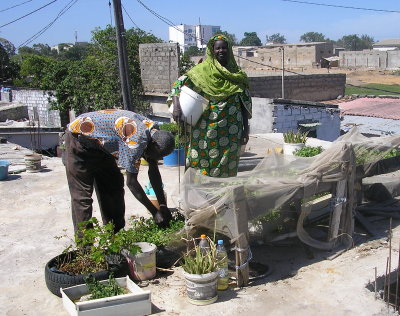 Hann is not the only place where this strategy for developing micro-gardening in the city of Dakar has paid off. Besides Hann Bel-Air, nine (9) other municipalities or boroughs have benefitted from the project Milan-Dakar in the context of improving food and feeding conditions. The marketing of any excess produce beyond home consumption remains an potential expansion area for micro-gardening.
Hann is not the only place where this strategy for developing micro-gardening in the city of Dakar has paid off. Besides Hann Bel-Air, nine (9) other municipalities or boroughs have benefitted from the project Milan-Dakar in the context of improving food and feeding conditions. The marketing of any excess produce beyond home consumption remains an potential expansion area for micro-gardening.
This would require the second phase of the project to take off or the support of other partners, which could help scale up the realisations arising from the exchanges between the training and demonstration centres and the community production centres.
Thanks to the earlier programme, the production of several attractive products is within reach, such as salad, cucumber, peppers, mint, zucchini and beets. It therefore seems important to consolidate the achievements of the first phase and go forward with the women, who have made it work so far.
Ibrahima SECK
Mariale-Colette Meffire - Media help sharing knowledge about the environment and health in Cameroon
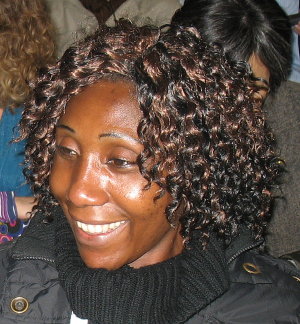 Specialized in environmental and health issues, Mariale-Colette MEFFIRE is a Cameroonian journalist based in the coastal city of Douala. She heads a network of female journalists in Cameroon known as Dynamic and Caring Female Journalists (DCFEJ). She also works for the Equinoxe Radio in Douala.
Specialized in environmental and health issues, Mariale-Colette MEFFIRE is a Cameroonian journalist based in the coastal city of Douala. She heads a network of female journalists in Cameroon known as Dynamic and Caring Female Journalists (DCFEJ). She also works for the Equinoxe Radio in Douala.
Her passion for the protection and the restoration of the sea and its livelihoods, prompted her to investigate the activities of a group of women specialized in fish smoking in the maritime city of Limbe in the South–West region of Cameroon and discovered that the women contribute immensely in the fight against poverty in their country.
Furthermore, the women are striving for the preservation of the taste and nutritive values of the fishes cherished by the population in and out of Cameroon as well as the protection of the environment.
Women: A driving force in the post-harvest handling of fish in Cameroon
Presented by Mariale-Colette Meffire (technical photos: O. Njifonjou)
INTRODUCTION
The fishing industry in Cameroon, like in other countries in Sub-Saharan Africa, is made up of men and women with the latter mostly concerned with processing and commercialization. In a 1996 report, over 40% of those involved in the fishing sector in Cameroon are women and they belong to various associations that oversee their activities. The women brainstorm on sustainable fishing with the assistance of fishery experts. One of such female association which is benefiting from these educative discussions is the “Basket Women Association” based in the coastal city of Limbe at the southern foot of Mount Cameroon. The climate is tropical and humid. These women smoke large quantities of fish on a weekly basis and market the produce in and out of Cameroon.
Presentation of the Association
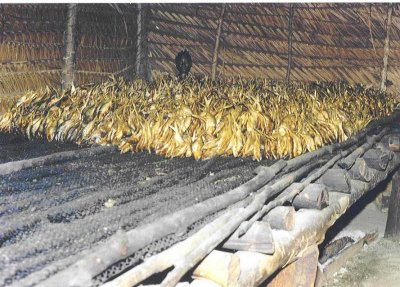 Created in 1989, the Basket Women Association (BWA) at dock yard in Limbe has as main objectives to encourage solidarity, provide mutual assistance and promote better post-harvest methods of fish.
Created in 1989, the Basket Women Association (BWA) at dock yard in Limbe has as main objectives to encourage solidarity, provide mutual assistance and promote better post-harvest methods of fish.
The association has 25 members who mostly hail from Nigeria and Cameroon. They meet monthly to evaluate their business and chart a way forward. Before the Chinese fishermen began practicing unsustainable fishing in the Cameroonian territorial waters, trading between local fishermen and the female fish processors was intense. In the past, the women who are spouses of the local fishermen, easily bought large quantities of fresh fish and processed them using traditional ovens, locally called “Banda” to conserve their products for sale in big towns such as Douala, Yaoundé and Garoua and in neighbouring Nigeria.
This method has proven to be the most suitable way of preserving the fish in a town like Limbe, where humidity is at about 93%. It is worth noting that the nutritional value in the different fish species is preserved after the smoking process. Fish smoking also provides permanent or temporal employment for youths who make up almost half of the about 1000 inhabitants in the dock yard neighbourhood in Limbe.
Considered to be one of the fishing hubs and a fish trading center in the touristy city of Limbe, the area can be noticed from a distance by the thick smoke emanating from the smoking houses which is a clear indication of the intense fish smoking activity there. One of the major characteristics of dockyard is that most of the houses are constructed with planks and the roads are not tarred as the coastline is swampy and mobile and mostly stabilized by the mangroves. The dockyard is located within the southern end of the Limbe municipality.
The worries of the women
 Members of this female network have received appropriate training on hygiene, sanitation and nutrition from different sources. Some have attended training sessions in the Gambia to learn new fish processing techniques using the modified chorkor ovens called the Gambian Banda. It consumes less wood, enables a more homogeneous product and protects women's health by reducing heat and smoke exposure.
Members of this female network have received appropriate training on hygiene, sanitation and nutrition from different sources. Some have attended training sessions in the Gambia to learn new fish processing techniques using the modified chorkor ovens called the Gambian Banda. It consumes less wood, enables a more homogeneous product and protects women's health by reducing heat and smoke exposure.
Unfortunately, these women are unable to construct such befitting ovens due to lack of finances. They are constantly appealing to the Cameroonian government and social partners to come to their aide and build modern ovens or improve credit facilities.
So far, only one member of the association owns a modern oven constructed with money from the husband.
The chorkors used to smoke fish have been constructed on council’s land and women like many others who own such structures hire portions of the land for an indefinite period. In all, the women pay 60.000 CFA francs yearly as taxes to the council and to other fishery services in the area. They claim the amount is exorbitant and want it reduced to permit them to meet up with some other financial exigencies such as children’s school fees, feeding and clothing for the entire family.
Another problem faced by members of BWA is the constant increase in cost of wood used to smoke the fish. A truck load (about 20 tons) of wood costs between 70.000 and 120000 CFA francs (140 and 240 US$). The high demand of the wood has resulted in over-exploitation of the coastal mangroves which serve among others as protection of the coastline and provide essential habitats for reproduction of fish, crab, oysters and many other marine and terrestrial organisms.
The fish processors continue excelling in the business despite the difficulties they encountered, especially when Chinese fishermen were in de facto control of Cameroon’s territorial waters for almost a decade. With the use of pairs of trawlers, the Chinese swept the bottom of the sea and out competed local fishermen in their canoes. The Chinese fishermen were carrying out their activities with the license of a renowned businessman in the locality. Several petitions widely criticizing the unsustainable fishing method of the Chinese were addressed to the administration by traditional leaders, fishery experts, local fishermen associations and the female network (Basket Women Association). It was only in 2010, the Cameroonian government put an end to the practice to the satisfaction of the local fisherman whose business was on the verge of collapse. The locals now hope that the resource will recover and provide a stable source of income.
Smoking method
Fish smoking in Limbe has been practiced for several decades now and is widely believed to be the best post-harvest method. Fishes smoked are the pelagic schooling species ethmalose (Ethmalosa fimbriata) and sardine (Sardinella maderensis). These species are abundant in the waters off Limbe. They are locally called “Bonga" or "Mololo” and “strong nkanda”, the two main fish species widely consumed in Cameroon and other Gulf of Guinea countries. They are rich in protein, fat and other nutrients. Smoking consists of two stages
First stage:
Before smoking properly begins, the fishes are thoroughly washed and arranged vertically, with their heads placed on the grills of the ovens by permanent and temporal workers called “bolo boys” or “bolo girls” With a temperature of over 90°C from the oven, the darkish water flows through the mouth of fish during the first phase of the smoking process which last between 6 and 7 hours. Within the first three hours 1/3 of the weight of the fish is already lost.
Second stage:
 Wet wood is used to produce the thick smoke that gradually smokes the fish and provides the attractive brownish colour to the fish. The fish are constantly turned so that all parts of the fish undergo the process, which lasts between 24 and 72 hours. At the end, almost 90 % of the water is drained from the fish and 70% of its weight is gone. It can thus be conserved for almost two months without decaying.
Wet wood is used to produce the thick smoke that gradually smokes the fish and provides the attractive brownish colour to the fish. The fish are constantly turned so that all parts of the fish undergo the process, which lasts between 24 and 72 hours. At the end, almost 90 % of the water is drained from the fish and 70% of its weight is gone. It can thus be conserved for almost two months without decaying.
Different dishes
The different fish species are used to prepare assorted Cameroonian dishes. “bonga” or “mololo” and “strong nkanda” are consumed differently in the various regions of Cameroon. For example in the littoral region, the Doualas use them to prepare “Egusi pudding” and “Ndole”, while in the West region they are used to cook porridge plantain locally called “Topsi banana”.
The fishes are equally important ingredients in one of the most popular Cameroonian dishes from the South-West region called “Eru”.
The taste derived from these fishes varies from one meal to another depending on relative composition of ingredients. In certain homes, especially the under-privileged in the society, a single fish or parts of the fish are used to prepare a meal.
Nutritional value of fish
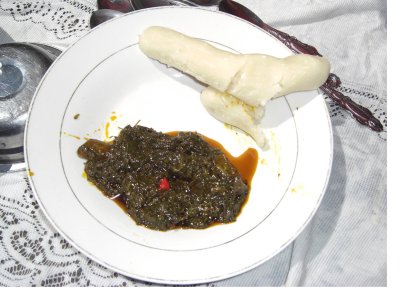 In an area, where fishing is the main activity of the population, fish remains an important nutritional component in the diets. They are roasted, fried or smoked. As widely known, the fatty fish suitable for smoking contain many nutrients which are beneficial to health.
In an area, where fishing is the main activity of the population, fish remains an important nutritional component in the diets. They are roasted, fried or smoked. As widely known, the fatty fish suitable for smoking contain many nutrients which are beneficial to health.
They also include vitamin A, zinc and valuable proteins which are preserved even after fish processing such as smoking. Statistics from the Food and Agricultural Organization (published in Kawarazuka, 2010) suggests that fish protein and animal protein consumption in Cameroon in 2009 stands at 36.1%.
Though blessed with this aquatic product, it was pretty difficult to independently verify the extent to which the population from this sea-side neighbourhood of Limbe actually consumes the fish or whether their concern is more on commercialisation.
Since no cases of malnutrition have ever been signaled in this part of Cameroon, it may be safe to say fish consumption there or the purchasing power derived from the fisheries-related activities is contributing to the food security and well-being of the population.
Conclusion
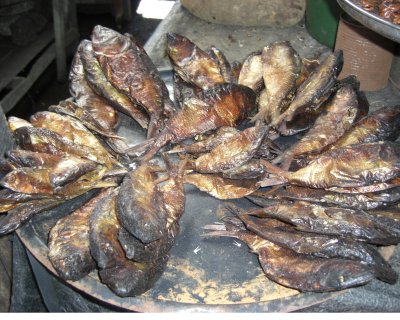 From all available indications and in the absence of cold chains, canneries and a well-developed transport infrastructure, smoking remains the best post-harvest fish conservation method in coastal Cameroon, especially as the rich nutritional value of the product is guaranteed. In a country, where average poverty rates stand at more than 50%, with the female folk being the worst affected, the dynamism of the women in the fishing community show the potential for improvement, if they can access opportunities in economic and commercial activities.
From all available indications and in the absence of cold chains, canneries and a well-developed transport infrastructure, smoking remains the best post-harvest fish conservation method in coastal Cameroon, especially as the rich nutritional value of the product is guaranteed. In a country, where average poverty rates stand at more than 50%, with the female folk being the worst affected, the dynamism of the women in the fishing community show the potential for improvement, if they can access opportunities in economic and commercial activities.
Apart from feeding the population, the income generated by the women helps enormously for the well-being of their families. The major challenge now is how the fish smoking business can evolve without the environment being destroyed. Savings in fuel wood per unit of smoked product have been shown to have also additional health benefits, but initial investment costs remain an issue. In the longer run, other post-harvest conservation methods based on renewable energy would also need to be re-examined or fish smoking combined with more extensive regeneration of fuel wood.
A concerted action is badly needed to open avenues for production, processing and consumption modes which strike a better balance with the renewability of the different resources underpinning the livelihoods of the women and men in the Limbe fishing communities. These must at the same time account for the multiple regional and international links through migration, trade and tourism. This will include more effective interaction with local and regional government and social partners on the plight of the women and promoting more responsible exploitation of Cameroon’s territorial water and its resources. It should also entail the restoration and sustainable exploitation of mangrove wood for smoking while safeguarding the many other ecosystem services of the mangroves, which are multi-facetted and very real, but do not have a market price.
With its experience in this domain, e.g. in neighbouring Nigeria's Niger Delta, the not-for-profit organisation Mundus maris – Sciences and Arts for Sustainability is willing to support different social actors (women's groups, fishermen, local administrations, scientists, artists, schools) in their efforts to explore more sustainable management of the seas and its resources.
References
FAO, 2000 - Poverty in coastal fishing communities. In Advisory Committee on fishery research third session December 5–8, 2000. Rome: Food and Agriculture Organization. Available from: http://www.fao.org/ DOCREP/MEETING/003X8905E.html
Kawarazuka, N., 2010 - The contribution of fish intake, aquaculture, and a small-scale fisheries to improving nutrition: A literature review. The Worldfish Centre Working Paper No.2106. The Worldfish Center, Penang. Malaysia. 51p.
Njifonjou, O., Njock, J.C., 2007 - Management and exploitation dynamics of the small scale fisheries in the Bay of Biafra: An integrative analysis of the Purse Seine fishing activity.The International Journal of Sustainable Development and World Ecology, 14: (3), 243 – 249.
Njock, J.C., Njifonjou, O., 1997 - L’utilisation des captures accessoires de la pêche crevettière au Cameroun : Rapport de l’atelier international sur la pêche crevettière dans le golfe de Guinée ; Douala, 12-14 février 1997
Ngo Som, J., 1996 - Women's role in Cameroon fishing communities: the cases of Limbe and Kribi. In: Report of the Working Group on women’s key role and issues related in fishing communities. FAO Document
Interviews with members of the Basket Women Association (BWA), July 2010.
We were there!
Mundus maris Participation in the Terra Madre – Slow Food 2010 Conference
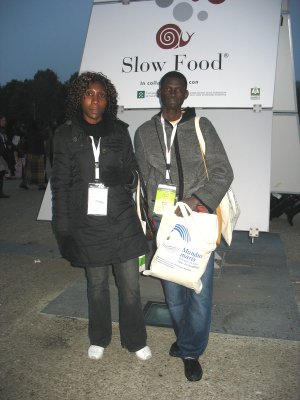 by Adaba Ibim, Ibrahima Seck and Mariale-Colette Meffire
by Adaba Ibim, Ibrahima Seck and Mariale-Colette Meffire
photos by Adaba Ibim and Ibrahima Seck
The 2010 edition of Terra Madre has come and gone with a global call for greater mobilisation for the promotion of good, clean and fair food around the world. Three members of Mundus maris took part at the international forum that took place in Turin, Italy, from 21 to 25 October.
During their stay in this beautiful city, Dr. Adaba Ibim from Nigeria, Ibrahima Seck from Senegal and Mariale-Colette Meffire from Cameroon attended some conferences on slow fish, land grab issues, GMOs (genetically modified organisms), biodiversity issues, the difficulties in ensuring food security in the world, the problem of land in Africa and female rights on land inheritance among many others.
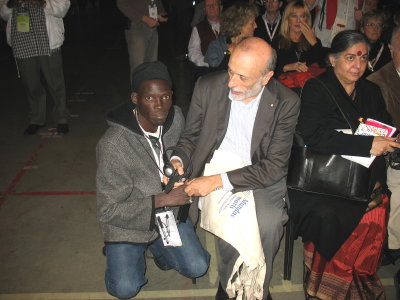 As pointed out by the founder and president of the slow food movement, Carlos Petrini, at the opening ceremony on Thursday October 21, at the winter-sports-multipurpose-complex in Turin, the war waged against fast food can not be won unless farmers and women who are at the center of agricultural activities in most countries in the world are given the respect they deserve.
As pointed out by the founder and president of the slow food movement, Carlos Petrini, at the opening ceremony on Thursday October 21, at the winter-sports-multipurpose-complex in Turin, the war waged against fast food can not be won unless farmers and women who are at the center of agricultural activities in most countries in the world are given the respect they deserve.
He noted with regret that the earth is not well preserved to guarantee sustainable agriculture and urged for a change of mentality.
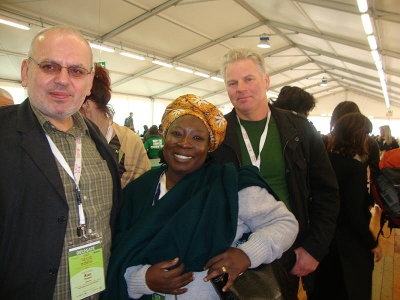 In most of the conferences, the three flag bearers of Mundus maris, and other participants from the over 150 countries, who took part at the Turin rendez-vous, underscored the importance for world leaders, civil society activists and other stakeholders to brainstorm on ways of ensuring that the culture of food is more widely respected and promoted.
In most of the conferences, the three flag bearers of Mundus maris, and other participants from the over 150 countries, who took part at the Turin rendez-vous, underscored the importance for world leaders, civil society activists and other stakeholders to brainstorm on ways of ensuring that the culture of food is more widely respected and promoted.
 Raising awareness of the activities of Mundus maris was a main mission assigned to the three delegates from the Association. Despite the absence of flyers (unfortunately stuck at the SlowFood office some distance away from where the events took place), the members succeeded in drawing the attention of some participants at the international conference in Turin to the activities of Mundus maris.
Raising awareness of the activities of Mundus maris was a main mission assigned to the three delegates from the Association. Despite the absence of flyers (unfortunately stuck at the SlowFood office some distance away from where the events took place), the members succeeded in drawing the attention of some participants at the international conference in Turin to the activities of Mundus maris.
The Mundus maris shopping bags brought by Ibrahima Seck were quite popular.
The delegates were also able to expose the ill influence of various human activities on the Seas around us, on organic communities around the sea or on those are dependent on the sea. There was ample opportunity to discuss action to get us out of the fisheries crisis and back into sustainable and healthy food production from the sea.
The Slow Fish section of Slow Food was quite active at the conference, not only with posters, but also discussion groups and seminars (see also snapshots below, above Adaba Ibim posing in front of the leading Slow Fish poster).
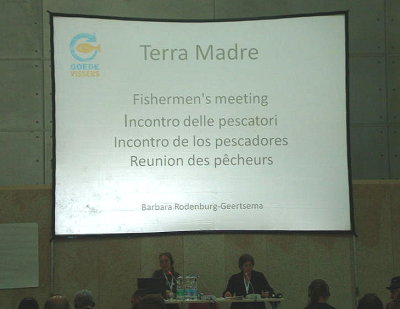 Another major objective was, of course, to get to know people from other countries, contribute own experiences and learn from those shared by others. The interactions and networking were intense throughout the entire duration of the event.
Another major objective was, of course, to get to know people from other countries, contribute own experiences and learn from those shared by others. The interactions and networking were intense throughout the entire duration of the event.
The three visiting associate-members of Mundus maris were also present at the stand of Moringa News hoisted by the the sponsoring organisation, the CTA; and helped in raising awareness on the nutritive values of the Moringa leaves. The plants are grown in some African countries, such as Ghana, Senegal and Madagascar, and the leaves processed in different ways, including into powder, tea and biscuits.
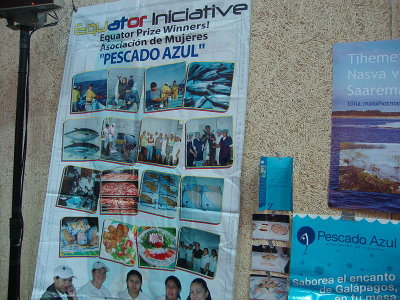 The 2010 edition of Terra Madre displayed the rich cultural diversity of the world and enhanced dialogue between the participants from different countries. It was an unforgettable trip. More snapshots by Adaba Ibim in the gallery below.
The 2010 edition of Terra Madre displayed the rich cultural diversity of the world and enhanced dialogue between the participants from different countries. It was an unforgettable trip. More snapshots by Adaba Ibim in the gallery below.





















